Food Destinations #2: Lebensmittel Markt am Helvetiaplatz, Zurich, Switzerland
This is my entry for Food Destinations #2: My Local Market.
There are several fresh food markets in Zürich. I was actually going to talk about another one, but someone else had covered it already (as you'll see in the roundup!), so I decided to head to the market at Helvetiaplatz.
Helvetiaplatz is a leafy square in a residential neighborhood of Zürich, and it caters mainly to residents. (It's also on the edge of the small red-light district of the city, but that doesn't mean it's seedy. No where in Zürich is really seedy.) It's a lively market with approximately 30 stalls - a nice manageable size. Everything is presented pristinely, like all Swiss markets. About half of the stalls sell fruits and vegetables, ranging from a big operation in the middle that sells mostly fruits, to small one-man stalls with apples, potatoes and other produce that had just travelled a few minutes. I love the fact that Zürich is the largest city in Switzerland but there are still farms within the city limits.
All the produce is very clearly labeled by country of origin, except for the small local farmers' stalls. Most of the produce comes from within Switzerland, or from Italy, Spain or France. There were berries galore - raspberries, blackberries and red currants; late peaches and nectarines, plums in all colors, and so much more.
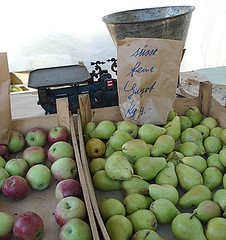 The really local fruit being sold by an old local farmer - an apple variety called Spartan that is rarely seen in supermarkets, juicy ripe pears, and reine-claude (greengages, a kind of plum) - were the most appealing to me though. If you've never had a fresh ripe greengage, which are a sort of pale yellow-green in color, you are missing a lot. And the apples were small, tart and crisp, the way I like my apples to be. What really drew my eye though was the really ancient scale he was using to weigh the fruit.
The really local fruit being sold by an old local farmer - an apple variety called Spartan that is rarely seen in supermarkets, juicy ripe pears, and reine-claude (greengages, a kind of plum) - were the most appealing to me though. If you've never had a fresh ripe greengage, which are a sort of pale yellow-green in color, you are missing a lot. And the apples were small, tart and crisp, the way I like my apples to be. What really drew my eye though was the really ancient scale he was using to weigh the fruit.
Fall was in the air in the form of squashes, both edible and ornamental. This green kind from the Ticino (the southern Italian speaking part of Switzerland) is one of my favorites, because it's sweet and dense like Japanese kabocha.
There are a lot of stalls selling flowers. On this first day of September there were lots of sunflowers and bright branches of physalis. This made me feel so nostalgic since my grandmother's garden had tons of these.
Some fall vegetable plants were being sold too. A lot of Swiss people with no gardens have allotments where they grow their own vegetables.
There are also stalls selling organically raised chicken and eggs, lamb, and other meats, fish, olives, as well as bread and baked goods. There was one crazy man from eastern Switzerland charming the socks off any lady that passed him by, convincing them to try his cured ham and cheese, rustic breads, and massive, fragrant steinpilz (Portobello mushrooms or large porcini).
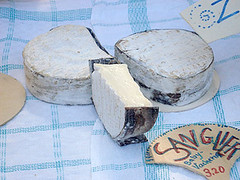 And what Swiss market would be without cheese? There are a few cheese stalls, selling Swiss as well as French, Italian and Greek varieties. I went a bit nuts buying at the stall selling some interesting French cheeses, such as a wild boar (sanglier) cheese. Though...do they really mean it comes from pig (boar) milk? I will have to go back and find out.
And what Swiss market would be without cheese? There are a few cheese stalls, selling Swiss as well as French, Italian and Greek varieties. I went a bit nuts buying at the stall selling some interesting French cheeses, such as a wild boar (sanglier) cheese. Though...do they really mean it comes from pig (boar) milk? I will have to go back and find out.
There's a lot more too. Helvetiaplatz is in an area that has in recent years seen an influx of people of many nationalities. (It might be interesting to note that it's estimated that 25% of the population of this small city is now non-Swiss.) There are a few stalls reflecting this - such as one selling Persian delicacies like dried rose petals, dried dates and figs, and another selling Asian vegetables like pak choy and bitter melon. Even the regular stalls are selling more exotic looking produce now.
The Helvetiaplatz market operates year-round on Tuesdays and Fridays from 6am to 11am. To get there, take tram 8 or bus 32. From the main station, take tram 14 to Stauffacher, then either tram 8 or just walk a few blocks.
(Even more photos here!)
If you enjoyed this article, please consider becoming my patron via Patreon. ^_^

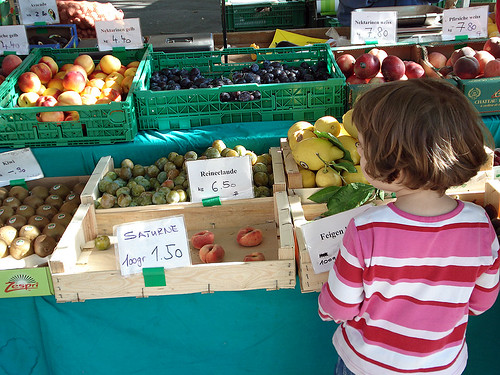
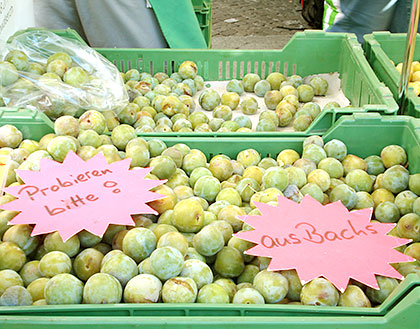
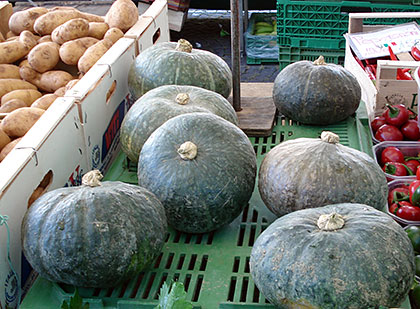
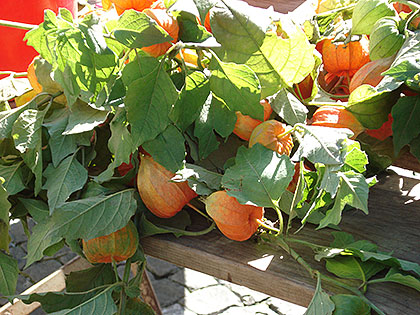
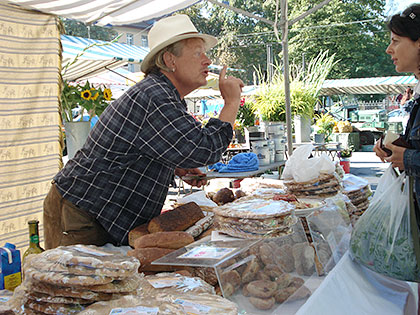
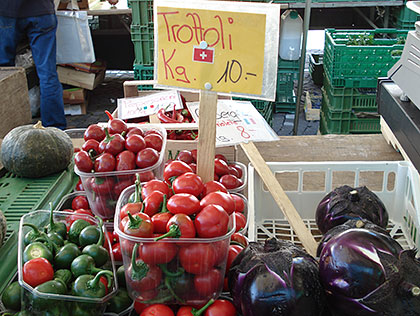
 Welcome to Just Hungry, where we serve authentic Japanese recipes and more! I'm
Welcome to Just Hungry, where we serve authentic Japanese recipes and more! I'm 












Comments
Christopher
3 September, 2006 - 00:32
Permalink
Food Destinations #2: Lebensmittel Markt am Helvetiaplatz, Zuric
I can't wait to visit this market when I'm in Zurich. About the mystery cheese: I think it's probably a Vacheron Mont d'Or from Franche-Comté or the Vaud. It's a cow's milk cheese that they put into a spruce wood hoop traditionally called a Sanglier. P.S. I love your blog.
maki
3 September, 2006 - 23:57
Permalink
Food Destinations #2: Lebensmittel Markt am Helvetiaplatz, Zuric
Ah, thanks for enlightening me about the sanglier Christopher! The sign even says "petit Vacherin"...i'm just blind :o
thanks for your kind words about the site too! :)
johanna
4 September, 2006 - 22:19
Permalink
Food Destinations #2: Lebensmittel Markt am Helvetiaplatz, Zuric
i'd like to contradict Christopher here, as with any luck, if it IS Vacherin, it was SWISS Vacherin. Unfortunately, you're not allowed to import Swiss Vacherin into the EU (although I have secretly smuggled a few in my lifetime, for personal use only, of course) - the reason is that it is less strictly controlled in Switzerland and still produced to traditional methods, and what's not regulated doesn't get EU approval ;-)
If you have never had it, please try it, Maki, you don't know how lucky you are to have this available just round the corner and be able to enjoy it without drifting into illegality!
maki
5 September, 2006 - 01:21
Permalink
Food Destinations #2: Lebensmittel Markt am Helvetiaplatz, Zuric
Hi Johanna. I have had Vacherin (Fribourgois, Mont d'Or, etc...I wait for the few weeks we can get full-bloom, runny Mont d'Or with that mold on the top rind...yum), but this Sanglier one I've never seen before...the price sign says actually "baby Vacherin" (not 'petit' as I said earlier) but I'm not sure what that means exactly in that context, and forgot to ask since the stall was very busy with customers then. Since they were only selling French cheese that I could see, I assumed the Sanglier was also French, but I'll ask them next time I'm there for sure!
We did eat a little, and it sort of tasted like a young, mild Vacherin Mont d'Or.
Max
5 September, 2006 - 01:47
Permalink
Food Destinations #2: Lebensmittel Markt am Helvetiaplatz, Zuric
A few more things about the Vacherin mystery:
Christopher is insofar right, as the piece of wood rind is called "la sangle" in French (at least in the Franche Comté and the Jura). Therefore, a fromage called "Sanglier" would be a fromage surrounded by a sangle.
The most famous "sanglier" type of cheese is, of course, the Vacherin Mont d'Or, which has been granted an AOC. And the classic way to make a Vacherin Mont d'Or is using fresh cow milk. However, after some cases of Listeriosis in the 80s of the last century, this practice got regulated, and they apparently found a way to create a Vacherin Mont d'Or using pasteurized milk.
Now, for the term "vacherin", it goes back to old times, where the term "vacherin" is said to be derived from the latin "vaccarinus", meaning "little cow herder" (or "cow boy" in its literal sense). The vacherin cheese used to be the cheese the little cow herder (the cow boy) could handle, because it was way lighter than the "big" cheeses (such as the Gruyère), which needed two people to handle. This kind of vacherin used to be of the size and kind of a Tomme.
So, bringing both together, we get a Tomme-like cheese (a "vacherin") surrounded by a piece of wood (a "sangle") ... and we have pretty much what that "Sanglier" actually is.
The association with a wild boar (a "sanglier") is of course understandable (thanks to the one of the biggest pseudo-French stories ... yes, you got it, Astérix), but it is, what linguists and translators call a "false friend".
Max
5 September, 2006 - 09:45
Permalink
Food Destinations #2: Lebensmittel Markt am Helvetiaplatz, Zuric
One more update about the "Sanglier" issue: In fact, a "sanglier" is not only a wild boar, but also the name of the profession making the "sangles".
BuzzTracker.com
3 September, 2006 - 02:34
Permalink
TrackBack from BuzzTracker.com: